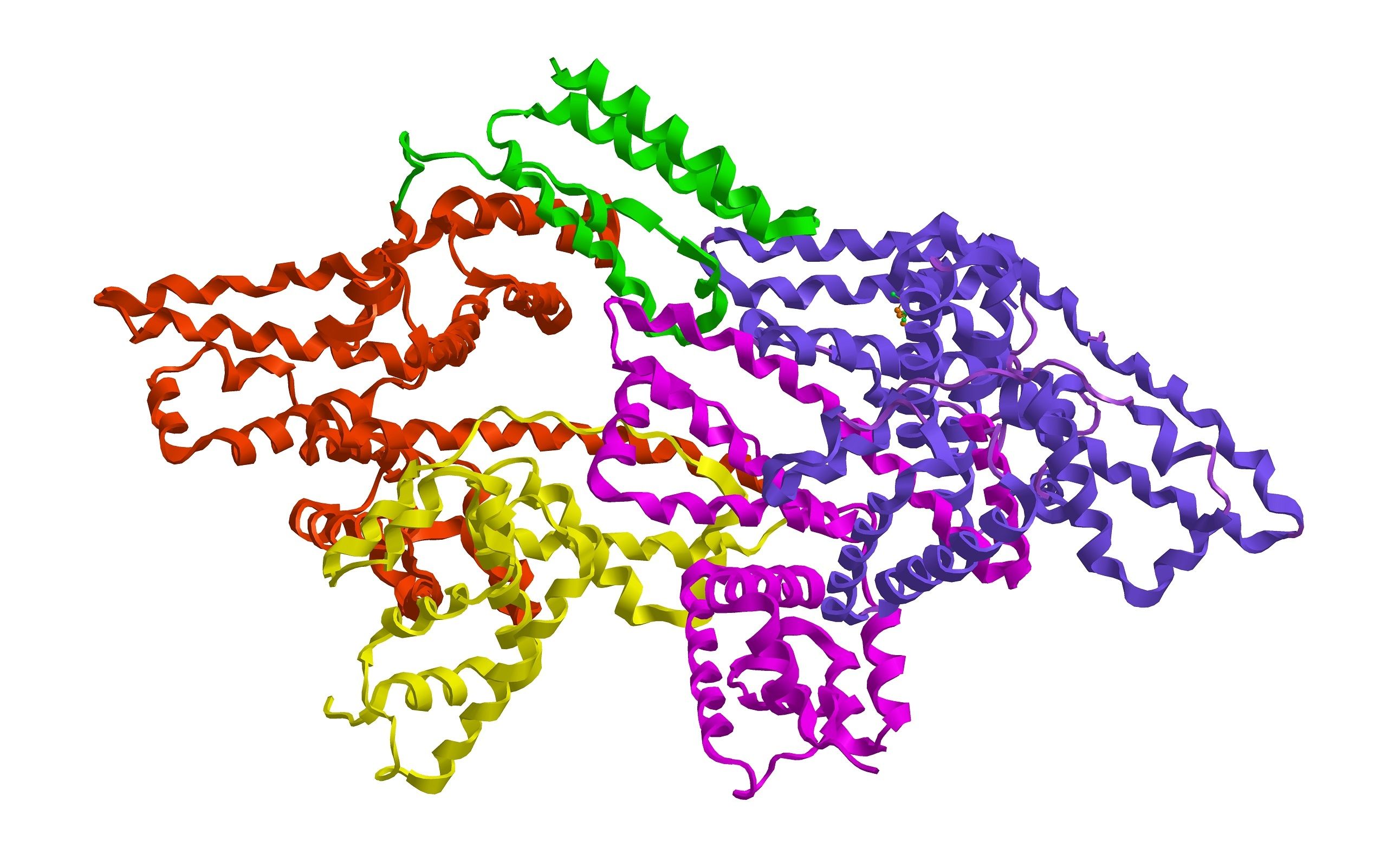Exploring the Binding Characteristics of Entrectinib with Bovine Serum Albumin
A recent study explored the binding characteristics of the tyrosine kinase inhibitor entrectinib with bovine serum albumin through multi-spectral analysis and theoretical calculations, revealing the factors affecting the stability of the ENB-BSA complex and potential ways to enhance the efficacy of ENB.
Researchers from Zhejiang University of Technology in Hangzhou have conducted a study to explore the binding characteristics of entrectinib (ENB), a tyrosine kinase inhibitor, with bovine serum albumin (BSA).
Molecular structure of Bovine serum albumin (BSA) | Image Credit: © raimund14 - stock.adobe.com

The study was conducted by multi-spectral analysis and theoretical calculations. ENB is a multi-target tyrosine kinase inhibitor that is mainly used for treating neurotrophic tyrosine receptor kinase gene fusion-positive solid tumors. The study found that ENB and BSA had moderate affinity and formed a complex with a stoichiometric ratio of 1:1 at 298 K. The binding constant was about 105/M, and Förster non-radiative energy transfer occurs. The researchers also found that hydrogen bond, van der Waals force, and hydrophobic force were the main factors affecting the stability of the ENB-BSA complex. The study was published in Spectrochimica Acta Part A: Molecular and Biomolecular Spectroscopy (1).
This experiment aims to study the binding mechanism of ENB and BSA through multi-spectral analysis (fluorescence, ultraviolet and circular dichroism spectroscopy), molecular docking, and molecular dynamics simulation. The goal is to understand the binding ability, quenching mechanism, conformational changes, and binding energy of the ENB-BSA complex. The results of this study could provide insight into the pharmacology and pharmacokinetics of ENB in vivo and assist in developing new tyrosine kinase inhibitors. The use of multi-spectral analysis and molecular modeling techniques may lead to a better understanding of the binding mechanism of other drug-protein complexes.
Entrectinib (ENB) is a small molecule inhibitor that selectively targets the tropomyosin receptor kinases (TRK) A, B, and C, which are involved in cell growth and differentiation. ENB also targets the anaplastic lymphoma kinase (ALK), which plays a role in certain types of cancer. ENB has shown promising results in clinical trials for the treatment of a range of solid tumors, including lung, breast, and colorectal cancer.
The researchers found that ENB quenched the fluorescence of BSA through mixed quenching and was dominated by static quenching at low concentration. The study also showed that Co2+ metal ions can enhance the binding effect, thus prolonging the half-life of ENB in vivo, which may improve the efficacy of ENB. However, Ca2+, Cu2+, and Mg2+ metal ions will reduce the efficacy of ENB.
Furthermore, molecular docking and site markers competition showed that ENB spontaneously bound to the Site III of BSA, causing changes in the spatial structure of BSA (α-helix decreased by 3.1%, random coil increased by 1.7%), and the microenvironment of tyrosine (Tyr) and tryptophan (Trp) residues. The study also revealed that the existence of metal ions affected the binding of ENB with BSA.
The study provides important insights into the binding characteristics of ENB with BSA, which is crucial for understanding the pharmacokinetics and pharmacodynamics of ENB. The findings of the study may help in improving the efficacy of ENB and enhancing its therapeutic potential for the treatment of neurotrophic tyrosine receptor kinase gene fusion-positive solid tumors.
Reference
(1) Jiang, S.-L.; Hu, L.; Hu, Z.-Y.; Wang, W.-J. Shi, J.-H. Exploring the binding characteristics of bovine serum albumin with tyrosine kinase inhibitor entrectinib: Multi-spectral analysis and theoretical calculation. Spectrochim. Acta A Mol. Biomol. Spectrosc. 2023, 295, 122555. DOI: 10.1016/j.saa.2023.122555
Pittcon 2025: Keynote Coulter Lecture Highlights Work in Regenerative Engineering
March 3rd 2025Yesterday, at 5:00 pm in Ballroom East, the Wallace H. Coulter Lecture took place, and it was delivered by Cato T. Laurencin, MD, PhD, who is well-known as a scientist and entrepreneur with an extensive career in regenerative engineering. His lecture highlighted the work he and his team has done in this space.
Advancing Zebrafish Research: FT-IR Imaging Sheds Light on Tissue Preservation in Zebrafish
February 5th 2025Researchers at the University of Lublin and the Medical University of Lublin have demonstrated the first application of FT-IR imaging in zebrafish larvae, revealing that frozen samples better preserve tissue structure than chemical fixation.
Combining SERS and Machine Learning to Advance Single-Cell Analysis
December 13th 2024Researchers from Stanford University have combined surface-enhanced Raman spectroscopy (SERS) with machine learning (ML) to enable rapid, precise single-cell analysis, offering potentially transformative applications in diagnostics and personalized medicine.